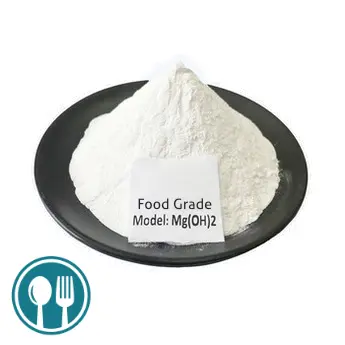According to the Official Gazette of the European Union, on March 13, 2024, the European Commission issued Regulation (EU) No. 2024/836, approving magnesium hydroxide E528 as an alkaline substance. These Regulations shall take effect on the twentieth day from the date of promulgation. Magnesium hydroxide is widely used as a food additive in the food industry. It is a white loose precipitate that is tasteless, non-toxic and odorless. It is widely used as an acidity regulator, nutritional enhancer, solidifier, stabilizer and anti-caking agent in food additives.

Magnesium hydroxide has the ability to neutralize acidity and is therefore widely used as an acidity regulator. During food processing, magnesium hydroxide can neutralize the acidic components in the food and bring the pH value of the food to an ideal range, thus extending the shelf life of the food and improving the taste and quality of the food. For example, when making juice drinks, adding an appropriate amount of magnesium hydroxide can make the pH of the juice close to neutral, preventing excessive acidity from irritating the oral cavity and gastrointestinal tract. It can also inhibit the growth of microorganisms and improve the hygiene and safety of the juice.

Magnesium hydroxide is used as a nutritional fortifier in food additives. Since magnesium hydroxide is rich in magnesium, it can provide additional nutrients in foods. For some special groups of people who need to supplement magnesium, such as pregnant women, the elderly or athletes, the magnesium content in food can be increased by adding magnesium hydroxide to meet their nutritional needs. In addition, magnesium hydroxide can also be used in combination with other nutritional ingredients to improve the nutritional value and health functions of food.
When making jams, candies and other foods, curing agents are needed to increase the consistency and stability of the food. Magnesium hydroxide can be used as a curing agent, which can react with polysaccharides in food to form insoluble substances, thus improving the consistency and stability of food. In addition, magnesium hydroxide can also be used in conjunction with other curing agents, such as carrageenan, xanthan gum, etc., to obtain better curing effects.

When making ice cream, soft drinks and other foods, stabilizers need to be used to increase the stability of the food and prevent precipitation, stratification and other phenomena. Magnesium hydroxide can be used as a stabilizer and can combine with protein, fat and other components in food to form a stable complex, thereby improving the stability and taste of food. In addition, magnesium hydroxide can also be used in conjunction with other stabilizers, such as sodium carboxymethylcellulose, xanthan gum, etc., to obtain better stabilizing effects.
Magnesium hydroxide is also widely used as an anti-caking agent to prevent food from clumping or sticking. For example, when making table salt, adding an appropriate amount of magnesium hydroxide can prevent the salt from clumping; when making starchy foods, adding an appropriate amount of magnesium hydroxide can prevent starch from adhering. In addition, magnesium hydroxide can also be used in conjunction with other anti-caking agents, such as calcium silicate, etc., to obtain better anti-caking effects.

